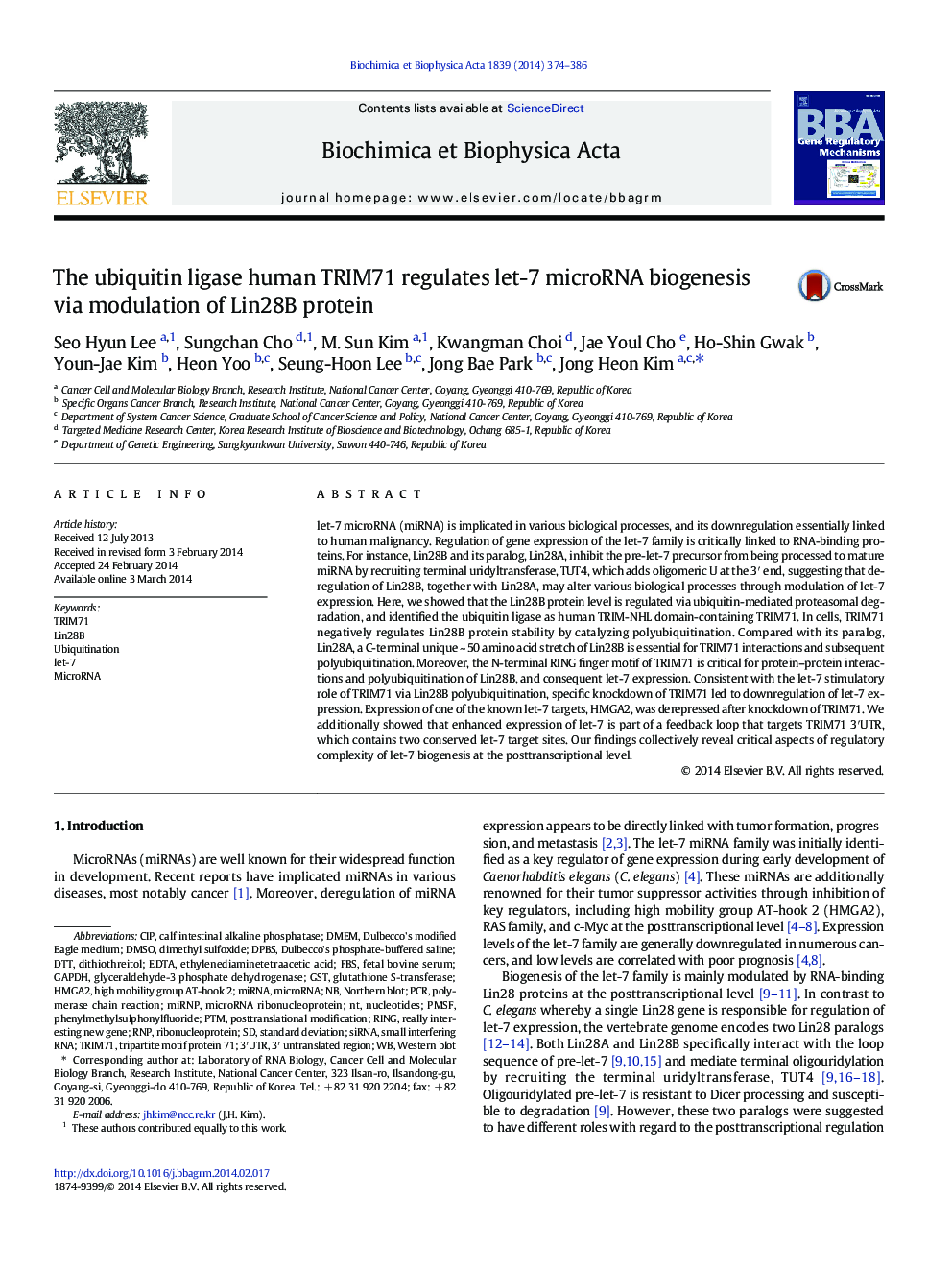| Article ID | Journal | Published Year | Pages | File Type |
|---|---|---|---|---|
| 1946454 | Biochimica et Biophysica Acta (BBA) - Gene Regulatory Mechanisms | 2014 | 13 Pages |
•TRIM71 modulates ubiquitination and degradation of Lin28B.•C-terminus of Lin28B is essential for ubiquitination and interactions with TRIM71.•RING finger motif of TRIM71 is essential for interactions and let-7 biogenesis.•TRIM71 modulates let-7 miRNA that targets HMGA2 expression.•let-7 is part of a negative feedback loop that targets the TRIM71–3′UTR.
let-7 microRNA (miRNA) is implicated in various biological processes, and its downregulation essentially linked to human malignancy. Regulation of gene expression of the let-7 family is critically linked to RNA-binding proteins. For instance, Lin28B and its paralog, Lin28A, inhibit the pre-let-7 precursor from being processed to mature miRNA by recruiting terminal uridyltransferase, TUT4, which adds oligomeric U at the 3′ end, suggesting that deregulation of Lin28B, together with Lin28A, may alter various biological processes through modulation of let-7 expression. Here, we showed that the Lin28B protein level is regulated via ubiquitin-mediated proteasomal degradation, and identified the ubiquitin ligase as human TRIM-NHL domain-containing TRIM71. In cells, TRIM71 negatively regulates Lin28B protein stability by catalyzing polyubiquitination. Compared with its paralog, Lin28A, a C-terminal unique ~ 50 amino acid stretch of Lin28B is essential for TRIM71 interactions and subsequent polyubiquitination. Moreover, the N-terminal RING finger motif of TRIM71 is critical for protein–protein interactions and polyubiquitination of Lin28B, and consequent let-7 expression. Consistent with the let-7 stimulatory role of TRIM71 via Lin28B polyubiquitination, specific knockdown of TRIM71 led to downregulation of let-7 expression. Expression of one of the known let-7 targets, HMGA2, was derepressed after knockdown of TRIM71. We additionally showed that enhanced expression of let-7 is part of a feedback loop that targets TRIM71 3′UTR, which contains two conserved let-7 target sites. Our findings collectively reveal critical aspects of regulatory complexity of let-7 biogenesis at the posttranscriptional level.
